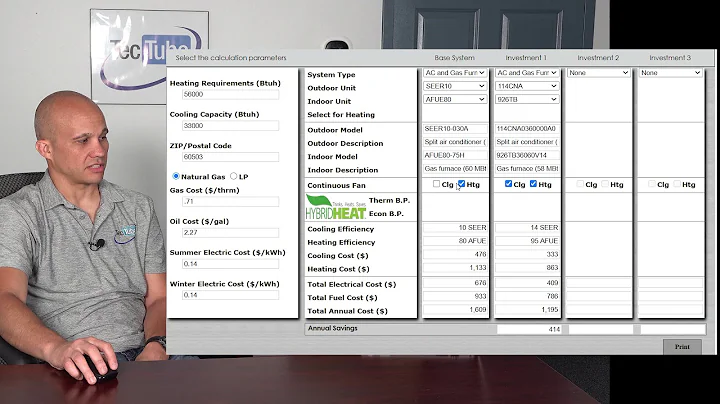Perfectly Fit Your Cycling Shoes with New Cleats: Step-by-Step Guide
Table of Contents:
- Introduction
- Things You Will Need
- Finding the Balls of Your Feet
- Marking the Balls of Your Feet
- Applying Grease and Attaching Cleats
- Seated Assessment
- Adjusting Cleat Position
- Testing Your Cleat Setup
- Tips for Riding with New Cleats
- Additional Considerations and Professional Help
- Conclusion
🚴♂️ Fitting New Cleats to Cycling Shoes: A Step-by-Step Guide
Are you excited about using your new cycling shoes but hesitant about fitting the cleats? Ensuring the correct placement of cleats is crucial to avoid discomfort or potential injuries while riding. In this comprehensive guide, we will walk you through the process of fitting new cleats to your cycling shoes, step by step. By following these instructions and taking some necessary precautions, you'll be ready to hit the road (or the indoor trainer) with confidence and comfort.
1. Introduction
Fitting new cleats to your cycling shoes may not be the most exciting task, but it is an essential one. Properly aligning your cleats will help optimize your pedaling efficiency, prevent hotspots, and reduce the risk of developing nagging pains or injuries. In this guide, we'll cover everything you need to know to achieve the perfect cleat setup.
2. Things You Will Need
Before you begin, make sure you have the following items ready:
- Grease
- Marker pen
- Allen keys
- Tape
- Cleats (e.g., LOOK, Shimano, Speedplay)
- Cycling shoes
Having these tools on hand will ensure a smooth and hassle-free cleat fitting process.
3. Finding the Balls of Your Feet
The first step in fitting your cleats correctly is determining the position of the balls of your feet. This measurement will help you establish how far forward or back your cleats should be placed. To locate the balls of your feet, feel along the inside and outside of your foot until you reach the protruding bones. These prominent points will guide your cleat placement.
4. Marking the Balls of Your Feet
To accurately mark the position of the balls of your feet, apply tape to your shoes' soles. This step is particularly useful if you want to avoid permanent marker stains on your brand-new shoes. Once the tape is in place, use a permanent marker to mark the exact position of the balls of your feet.
5. Applying Grease and Attaching Cleats
Before attaching your cleats, it's essential to apply grease to the screws. This will make it easier to remove the cleats in the future. Look for the marker or line indicating the center of the pedal axle on your cleats, and align it with the mark you made on your shoes. Tighten the screws securely but avoid overtightening to prevent damage to your shoes.
6. Seated Assessment
To evaluate the natural position of your feet while pedaling, perform a seated assessment. Sit at the end of a high desk or chair, with your feet hanging off the edge at a 90-degree angle. Observe how your feet naturally fall. For most people, the heels will be slightly inward. This assessment will help determine the positioning of your cleats, ensuring a more comfortable and efficient pedaling motion.
7. Adjusting Cleat Position
Now that you're aware of the natural angle of your feet, it's time to adjust the cleat position accordingly. If your left foot, for example, naturally points slightly outward, replicate that angle by turning the cleat ever so slightly. The goal is to accommodate your individual foot position rather than forcibly altering it.
8. Testing Your Cleat Setup
To ensure your cleat setup feels comfortable and efficient, it's essential to do a brief test. If you have access to an indoor trainer, record a video of yourself pedaling from different angles. Pay close attention to how your cleats align and how your pedaling motion appears. Make any necessary adjustments based on your observations.
9. Tips for Riding with New Cleats
Congratulations! You've successfully fitted your new cleats. However, before embarking on extensive rides, it's wise to start with a gentle outing. This will allow you to become accustomed to the new cleat position gradually. Remember to take an Allen key or multi-tool with you on your first ride to make any minor adjustments if required.
10. Additional Considerations and Professional Help
If you prefer keeping the same cleat position from your previous pair of shoes, a helpful trick is to outline the old cleats with a white marker before removing them. This method will guide you when positioning your new cleats precisely. However, if you encounter any difficulties or have specific concerns, it's advisable to seek assistance from a professional bike fitter.
11. Conclusion
Fitting new cleats to your cycling shoes may seem daunting, but with the right guidance, it becomes a manageable task. By following the step-by-step instructions outlined in this guide, you can ensure optimal comfort, efficiency, and enjoyment on your next cycling adventure. So, grab your tools and get ready to experience the road or trail in style with your perfectly fitted cleats.
Highlights:
- Fitting new cleats is crucial for comfort and injury prevention during cycling.
- Mark the position of the balls of your feet using tape and a permanent marker.
- Apply grease to the screws before attaching the cleats to facilitate future removal.
- Adjust the cleat position to match your natural foot angle for optimum pedaling efficiency.
- Testing your cleat setup through a video assessment can help identify necessary adjustments.
- Start with easy rides to get familiar with the new cleats before longer and more demanding rides.
- Seeking professional assistance may be beneficial for complex cleat fitting or alignment issues.
FAQ:
Q: How often should I replace my cleats?
A: Cleat replacement depends on factors like usage, walking on hard surfaces, and wear. It's generally recommended to replace cleats every 6-12 months or when significant signs of wear and tear become evident.
Q: Can I use the same cleats for different cycling shoe brands?
A: Yes, as long as the cleat pattern matches the shoe's compatibility. Most road cycling shoes and cleats follow the standard three-bolt pattern, but it's essential to double-check compatibility before purchasing.
Q: Should I consult a professional bike fitter to fit my cleats?
A: While it's possible to fit cleats on your own, consulting a professional bike fitter can provide valuable expertise, especially if you have specific biomechanical issues or require more precise adjustments.
Q: Can I use other types of grease instead of bike-specific grease?
A: Bike-specific grease is recommended for its appropriate consistency and compatibility with the materials used in cycling shoes and cleats. However, general-purpose grease may suffice in a pinch, although it might not offer the same longevity and performance.
Q: Are there any signs I should look for to indicate that my cleat position needs adjusting?
A: If you experience discomfort, numbness, or hotspots during your rides, it may be an indication that your cleat position needs adjustment. Pay attention to any changes in your pedaling efficiency or any unusual sensations in your feet.







